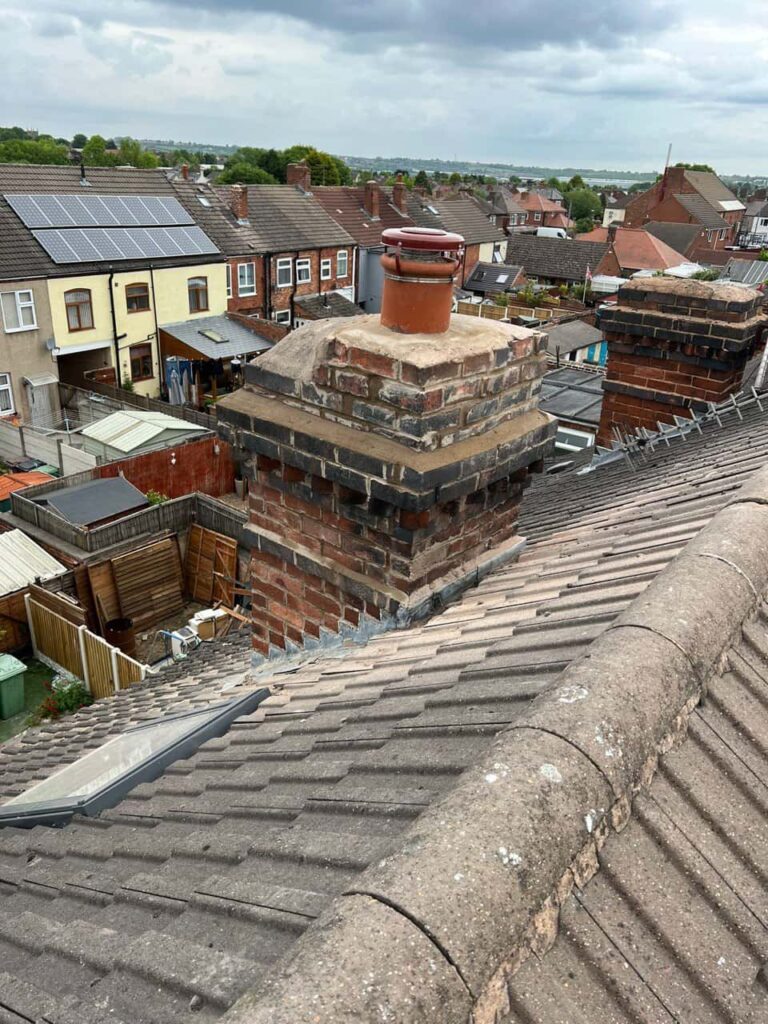Roof flashing may not be the most noticeable part of your roof, but it plays one of the most critical roles in keeping your property watertight. It’s the thin layer of material — often lead, aluminium, or steel — that seals joints and prevents water from entering vulnerable areas like chimneys, roof valleys, and skylights. When flashing begins to deteriorate, even a small defect can lead to leaks, damp patches, or structural damage. At Hassocks Roofing Repairs, we know that replacing flashing is not a simple DIY task — it’s a precision job that demands professional expertise and experience.
Understanding the Purpose of Roof Flashing
Flashing acts as the barrier that directs water away from joints and seams where tiles or roofing sheets meet other structures. Without properly installed flashing, rainwater can seep behind the roofing materials and cause damage to timber, insulation, and plaster. The main types of flashing used on roofs include:
- Chimney flashing: Protects the area where the chimney meets the roof.
- Valley flashing: Installed in the internal angles where two roof slopes meet.
- Drip edge flashing: Prevents water from flowing under roof edges.
- Step flashing: Used around dormers, skylights, and sidewalls to guide water down and away.
Each of these requires precise fitting and sealing to function effectively, and any inaccuracy can lead to long-term damage.
Why Flashing Fails Over Time
Even the most robust materials will eventually degrade under constant exposure to the British climate. In Hassocks and throughout West Sussex, roofs face persistent rain, frost, and strong winds, which can gradually weaken flashing. Common causes of failure include:
- Corrosion or metal fatigue due to moisture and oxidation.
- Improper installation, leading to gaps or loose joints.
- Movement in the structure, causing cracks or lifted sections.
- Sealant deterioration, allowing water to seep in behind the metal.
When any of these issues arise, professional inspection and replacement are essential to maintain the roof’s integrity.
Why Flashing Replacement Is Not a DIY Job
Replacing flashing may appear straightforward, but it involves far more than simply removing and resealing metal sheets. Professional roofers, such as those at Hassocks Roofing Repairs, follow careful procedures to ensure the job is completed safely and effectively. Here’s why expert skill is vital:
1. Correct Diagnosis of the Problem
It takes experience to determine whether the issue lies in the flashing itself or in another part of the roof. An untrained eye might replace flashing unnecessarily or overlook deeper structural problems that cause leaks.
2. Accurate Fitting and Sealing
Flashing must be installed at the correct angle and depth to create a watertight seal. If it’s cut too short, fitted loosely, or sealed incorrectly, water can easily penetrate the gap. Professionals use specialist tools and materials to achieve precise results.
3. Knowledge of Compatible Materials
Different roofing systems require specific flashing materials. Using the wrong type of metal or sealant can cause chemical reactions, corrosion, or discolouration. An experienced roofer will always match the flashing material to the roof type and surrounding features.
4. Safe Work at Height
Working around chimneys, skylights, and roof edges poses significant safety risks. Roofing professionals are trained and equipped to handle these challenges, ensuring the replacement is done safely without damaging the surrounding roof tiles.
The Consequences of Poor Flashing Work
Inadequate or poorly fitted flashing can lead to serious and expensive issues over time. Water can seep through roof joints and cause:
- Rotting timbers or weakened roof structures.
- Mould and damp within ceilings and walls.
- Damage to insulation, reducing energy efficiency.
- Premature deterioration of tiles and underlay.
Regular inspections by Hassocks Roofing Repairs can help detect early signs of flashing failure before they escalate into more extensive roof repairs.
Signs You May Need Flashing Replacement
Homeowners should watch for the following warning signs:
- Water stains or damp marks near chimneys or skylights.
- Visible cracks or corrosion in metal flashing.
- Missing mortar or gaps around chimney bases.
- Loose or warped flashing strips.
If any of these symptoms appear, it’s best to have a professional assessment carried out promptly to prevent leaks from worsening.
Conclusion
Flashing is one of the most important components of any roofing system, protecting your home from moisture damage and extending the lifespan of the roof. However, when flashing fails, it requires more than a quick patch-up — it demands professional expertise, precision, and experience. At Hassocks Roofing Repairs in Hassocks, West Sussex, our skilled team ensures every flashing replacement is carried out with meticulous attention to detail, restoring full protection to your roof and peace of mind to your home. Regular maintenance and timely repairs are the key to keeping your property safe and watertight for years to come.
Call us on: 01273 071 192
Click here to find out more about Hassocks Roofing Repairs
Click here to complete our contact form and see how we can help with your roofing needs.

